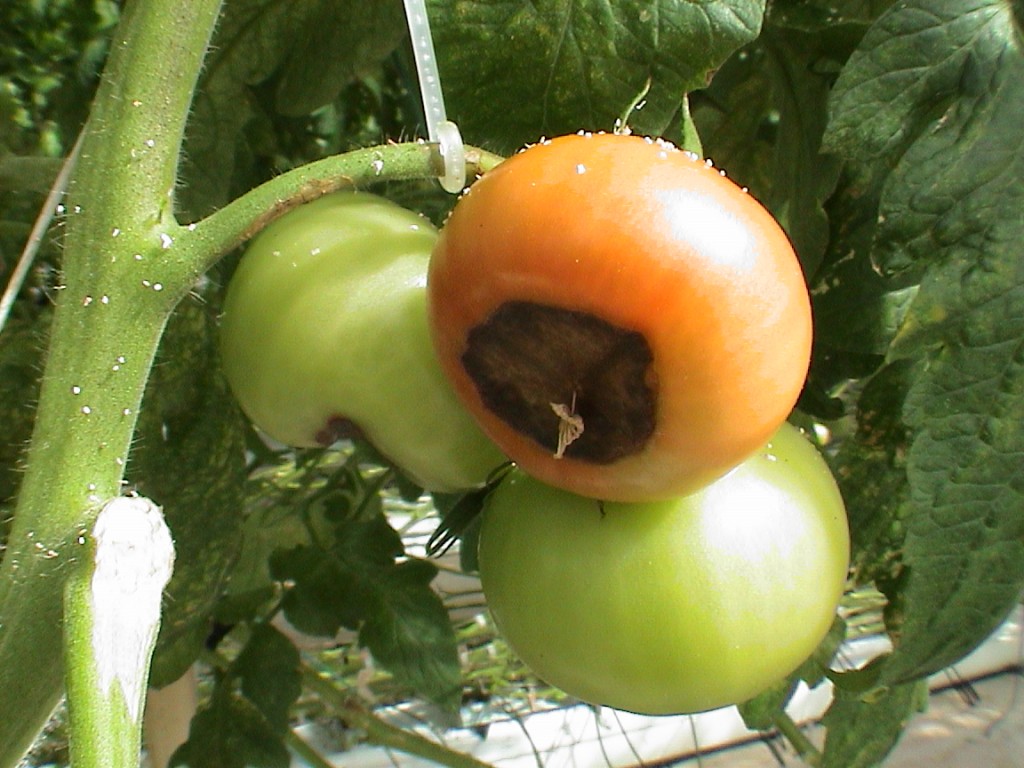What’s Bugging You? Blossom End Rot

A dark sunken or water-soaked spot at the bottom of a tomato is the classic symptom of blossom-end rot. This relatively common garden problem has been especially prevalent this year. The problem itself is is not a disease, but a calcium deficiency within the plant. It can also appear in pepper, squash, cucumber and melon type fruits.
The reason for this seasons overwhelming appearance on blossom-end rot is due in most part to the incredibly dry season we’ve had. Without necessary rain the plants ability to absorb calcium is greatly diminished as no water is available to draw the calcium from the soil up into the plant. Other causes of blossom end rot include; fluctuations in soil moisture (too wet or too dry), too much nitrogen, soil pH that’s either too high or too low or soil high in salts. Damage will generally appear when the fruit is approximately half their full size. The dark spots will continue to enlarge and turn dark brown and leathery. Sadly there’s no saving a fruit afflicted with end rot so pick it and discard when you notice the problem. The sooner you notice the problem and remove the fruit the better it is for the plant and remaining crop as nutrients are not being diverted to the unhealthy fruit.
To prevent blossom end rot maintain consistent levels of moisture in the soil throughout the growing season. Remember to water deeply and once or twice a week rather than many shallow waterings.
Prevent and repair calcium deficiency with products such as Pelletized Gypsum or Lime, also available are organic tomato fertilizers which include calcium such as the Myke Organic Tomato Food + Calcium. The newest product available with maximum calcium impact is a product called Cal Max. We’ve just started to carry this particular product from Grotek and highly recommend it for blossom end rot problems.
Finally be sure to keep garden records: you may find that some crop varieties are more susceptible to blossom-end rot than others. Good luck!


